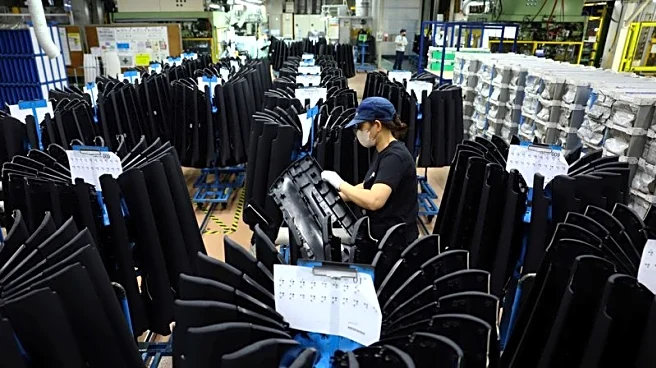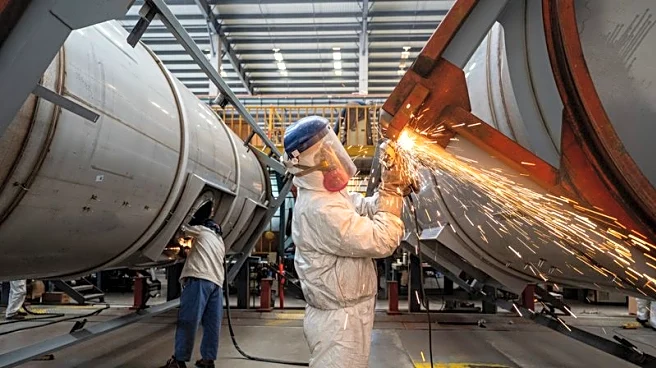What's Happening?
The Institute for Supply Management (ISM) has released its latest Manufacturing Report on Business, indicating a contraction in manufacturing output for the seventh consecutive month. The report's benchmark reading, the PMI, stood at 49.1, slightly up from August's 48.7, but still below the growth threshold of 50. Despite the contraction in manufacturing, the overall economy has been growing for 65 consecutive months. The report highlighted growth in five manufacturing sectors, including Petroleum & Coal Products and Primary Metals, while sectors such as Wood Products and Apparel saw declines. Key metrics such as New Orders and Production showed mixed results, with New Orders falling by 2.5% and Production rising by 3.2%. Tariffs and economic conditions were cited as significant factors affecting manufacturing, with panelists expressing concerns over increased price pressures and reduced profits.
Why It's Important?
The continued contraction in manufacturing is significant as it reflects broader economic challenges, including tariff impacts and macroeconomic conditions. Manufacturing is a critical component of the U.S. economy, influencing employment and production rates. The report suggests that tariffs are leading to increased costs and reduced demand, which could result in stagflation—a period of stagnant growth coupled with inflation. This situation poses challenges for manufacturers who may need to reduce overhead and workforce to maintain profitability. The federal government shutdown adds further uncertainty, potentially delaying approvals and audits necessary for manufacturing operations. These factors combined could lead to prolonged economic stress and impact consumer purchasing decisions.
What's Next?
Manufacturers may continue to face challenges as they navigate tariff policies and economic uncertainties. The ISM report suggests that interest rate cuts may not significantly impact manufacturing recovery. Companies may need to find ways to reduce costs and adapt to changing market conditions. The federal government shutdown could exacerbate these issues, particularly for sectors reliant on government approvals. Stakeholders will likely monitor economic indicators closely to assess potential recovery or further contraction in the manufacturing sector.
Beyond the Headlines
The ongoing contraction in manufacturing raises ethical and economic questions about the impact of tariffs and government policies on industry stability. The reliance on tariffs as a policy tool may have unintended consequences, such as increased consumer prices and reduced competitiveness. Long-term shifts in manufacturing practices may be necessary to adapt to these challenges, potentially leading to innovations in supply chain management and production efficiency.











